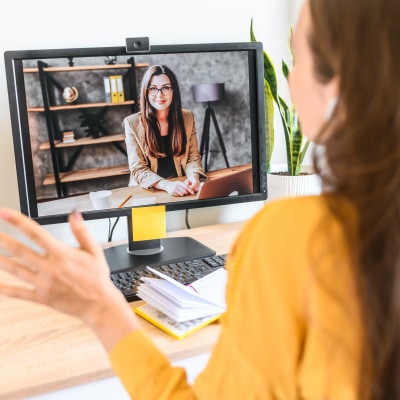In the age of remote work and virtual meetings, business conference calls—often via Zoom, Teams, or Google Meet—have become a cornerstone of modern professional communication. While it may be tempting to take a casual approach to dress when working from home, what you wear on camera can have a significant impact on how you’re perceived. First impressions still matter—even digitally. Here’s how to strike the perfect balance between comfort and professionalism on your next business conference call.
1. Keep It Professional (From the Waist Up)
Let’s face it: most video calls only show your upper body. This doesn’t mean you should wear pajama pants (even if you’re tempted), but it does mean your focus should be on how you appear from the chest up. A clean, well-fitting shirt or blouse in neutral or solid colors is usually the safest bet. Avoid overly busy patterns, which can be distracting or look distorted on camera.
Men might opt for a button-down shirt or polo, while women might choose a blouse, knit top, or tailored sweater. Blazers are optional but can be a great choice for formal calls or presentations. Always avoid tank tops, T-shirts, or anything that looks too casual—even if the dress code is relaxed.
2. Choose Colors That Work Well on Camera
Bright white or stark black can sometimes confuse the camera’s lighting and create unwanted shadows or glare. Instead, aim for medium-tone colors such as light blue, gray, burgundy, or earthy tones. These colors tend to be camera-friendly and complement most backgrounds.
Avoid neon or extremely bright shades that might reflect light or distract the viewer. Also, be cautious with stripes and tight patterns, as these can cause a moiré effect (a distracting visual distortion) on video.
3. Grooming and Accessories Matter
Good grooming is just as important on video as it is in person. Brush your hair, touch up your makeup (if you wear it), and be sure your facial hair is neat and clean. If you wear glasses, ensure they are free of glare, and adjust your lighting if needed to avoid reflections.
Keep accessories minimal. Flashy jewelry or dangling earrings can distract from what you’re saying. A simple watch, stud earrings, or a modest necklace can add polish without stealing the spotlight.
4. Consider Your Background and Lighting
While not part of your wardrobe, your surroundings affect how your outfit appears. Make sure you’re sitting in a clean, uncluttered space with good lighting. Natural light is ideal, but ring lights or soft LED panels work well too. Avoid sitting with a bright window behind you, which can cast your face into shadow.
5. Comfort Still Counts
Professional doesn’t mean stiff. Choose clothes that you feel comfortable in for long calls or full-day meetings. Avoid scratchy fabrics or tight collars that might cause discomfort or fidgeting on camera.
Conclusion
Dressing for a business conference call is about looking polished and presentable while feeling comfortable. Stick to simple, well-fitting tops in flattering colors, maintain a groomed appearance, and be mindful of your environment. When you dress the part—even virtually—you show respect for your colleagues and your work.


